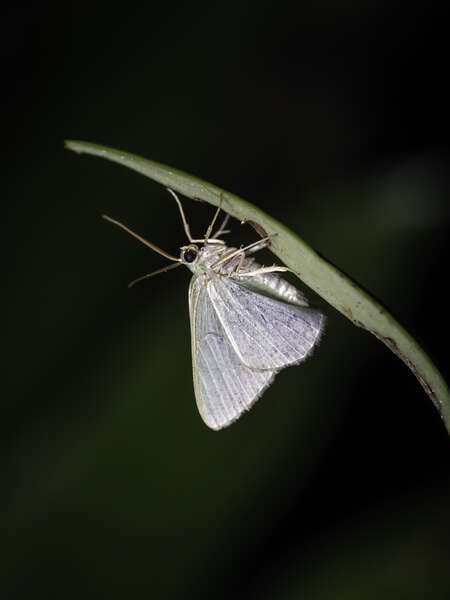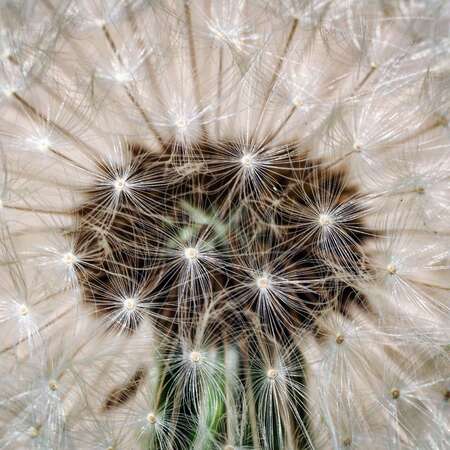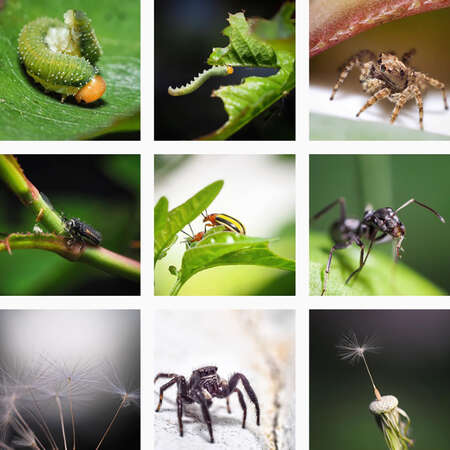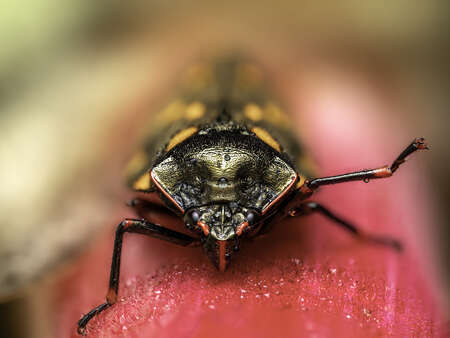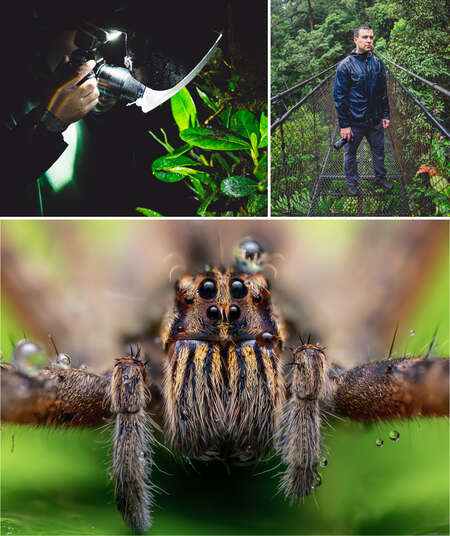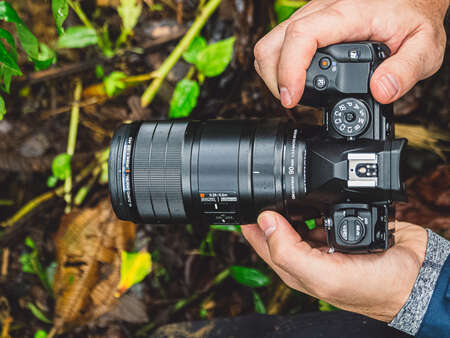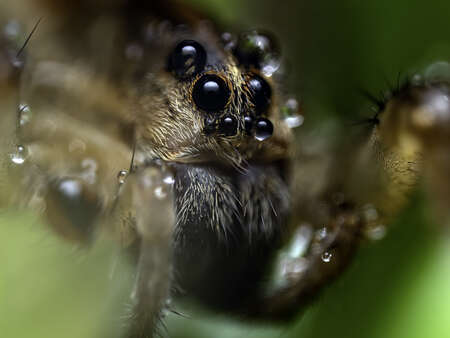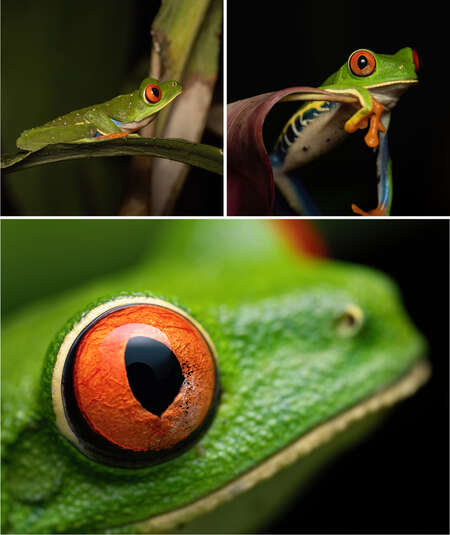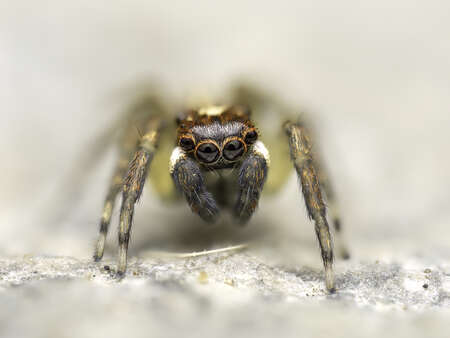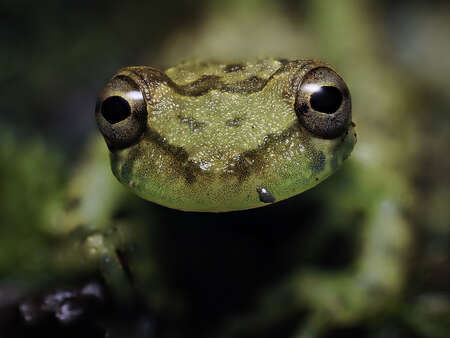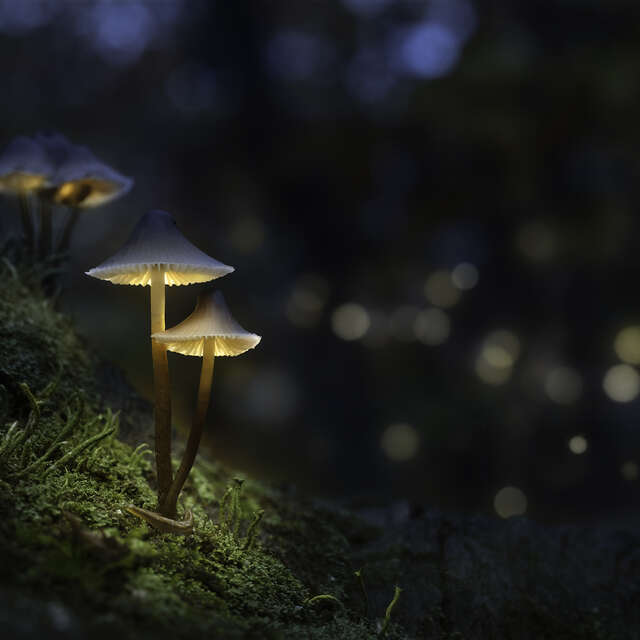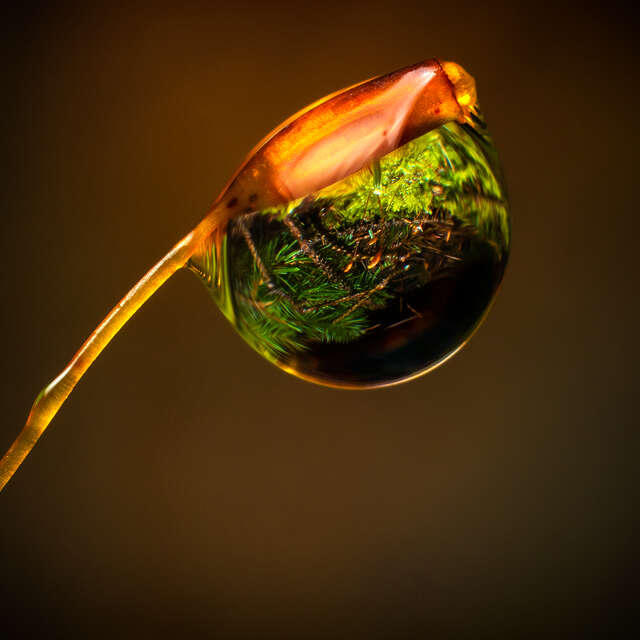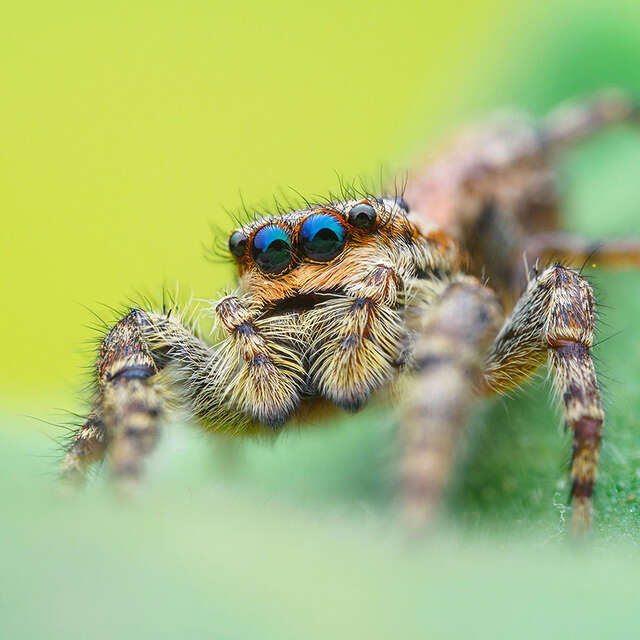Sometimes it just happens: a simple thing you try turns into a hobby, then a passion, and eventually so much more. Macro photography has taken me to places – both creatively and professionally – I never planned nor even dreamt about. This story is about my journey into an unseen world. It’s also about a brand-new PRO macro lens which I had the privilege to test as the first photographer in the wild.
Photography provides the opportunity to freeze a moment and share it with the world. Photographers might showcase exciting moments in sports, beautiful scenes from nature, or special events in people’s lives. The photos let us pause, observe, and appreciate things in a way that just isn’t possible in real time.
As my journey into photography unfolded, I found myself more and more interested in the details – and I soon realized there were way more details to be interested in than I had ever imagined. Macro photography became my thing, my niche, and my source of constant inspiration.
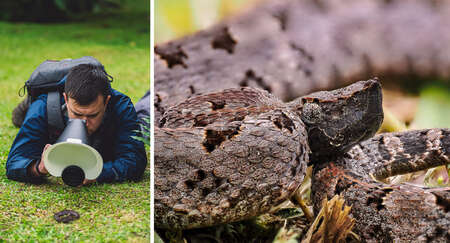
The two sample photos above are good examples of how photography has changed my view of the world. Many people regard butterflies as beautiful – much more than snakes or other reptiles – but I get excited about both. With close-up and macro photos, I can show animals’ true character in their natural environment to portray the beauty others might pass by.
Both photos were both taken with a brand-new OM SYSTEM macro lens, the M.Zuiko Digital ED 90mm F3.5 Macro IS PRO, which I got to test in the rainforest of Costa Rica. It is a marvelous lens for any macro photographer, but to understand why it suits someone like me, let's first start from the beginning.
It's The Little Things
On May 11, 2016, I shared a photo on Instagram with the following caption: “I’ve decided to shoot more macro photos.” I had no idea how much that post would change the path of my life moving forward. For starters, it wasn’t the best photo. It also wasn’t an insect nor spider. But it gave me a small peek into a fascinating new world of detail.
With every macro photo I made, I slid deeper and deeper into love with the genre. Everywhere I looked, I found something new. With every shot I took, my photos got better, but there was always room for improvement. And I desperately wanted to improve.
Macro Opportunities are Everywhere
Soon after entering this new world, I started to gravitate toward miniature wildlife. Wherever I searched, I found all kinds of insects, spiders, and other tiny critters that I had previously overlooked. And in macro photos, they looked amazing! I was captivated by them and wanted to share what I found with the world, so others might share in my fascination.
I could go on and on about why I love macro photography, but my favorite thing has to be accessibility. Amazing macro photos can be made inside the house, in the backyard, at a local park, or in an exotic location. Sure, exotic locations can provide a sense of adventure and excitement (more on that in a minute), but the magic of macro is in the details.
With macro, you don't have to travel to faraway places, since a hidden world can often be found in your own yard, at a local park, or in a nearby meadow. Most of my photos are made within three miles of my Bethlehem, Pennsylvania home. That's not something people focusing on other photography genres often get to claim.
I am regularly astonished by this world I would never know without macro photography. Ordinarily, it’s quite difficult – or even impossible – to recognize the smallest subjects, but with macro, we can dive into very small sections of the world to discover amazing details and moments.
For seven years, I have lived and breathed field macro. It never bores me. I’m always itching to see what I can discover next or how I can showcase something in a new way.
Stepping into the Rainforest with the 90mm Macro
Until recently, my main workhorse lens for macro photography has been the M.Zuiko Digital ED 60mm F2.8 Macro which I’ve utilized to make thousands of photos. It’s been incredible. But in September of 2022, when OM SYSTEM announced a new lens roadmap showing the development of a new PRO-level macro lens, the M.Zuiko Digital ED 90mm F3.5 Macro IS PRO, I grew giddy with anticipation.
And soon after that, I got a call to go on a trip of a lifetime. I was invited to test the new unreleased lens on a 4-day macro adventure – as the first photographer in the world – in the rainforests (emphasis on ‘rain’) of Costa Rica. Who could resist that?
My excitement for the experience was off the charts, but I wasn’t prepared for the photographic opportunities that the new 90mm Macro would unlock.
I fully expected the new 90mm Macro to perform well. I already knew the weather-sealing of Olympus and OM SYSTEM cameras and lenses could handle whatever weather I’d encounter. I expected to get a higher magnification than what I got with my 60 mm Macro, I wanted the highest degree of image quality, and hoped for an enjoyable shooting experience. The new lens delivered all that and more.
and some aspects of the more were quite surprising.
More Magnification Equals More Freedom
Each genre of photography has a need for special lenses. In many cases, there is a technical limit that photographers in that genre push against: “If only my lens had just a little more of X”. For some, the limiting factor is aperture. For others, it’s telephoto reach. In macro, the limit is usually magnification.
Like I said, my previous workhorse-lens has been the M.Zuiko Digital ED 60mm F2.8 Macro which offers true 1:1 magnification. This means that an object that is the size of the camera’s sensor will fill the frame at the lens’ closest focusing distance.
The 1:1 magnification of the 60mm Macro has been excellent for most of my photography. Actually, comparing that lens to macro-offerings from other brands, it compares quite favorably. Due to sensor size differences, the 1:1 magnification of the Olympus 60mm Macro is actually equivalent to 2:1 magnification in 35 mm systems. And lenses above 1:1 in 35 mm systems are very rare, so with just the 60mm Macro I’m getting shots that users of other brands might need special extra equipment on their lenses to get.
But, many of my favorite photos are made at or near the 60mm Macro’s 1:1 magnification limit. Even though 1:1 is great, autofocus works right up to the minimum focusing distance, and image quality is gorgeous, I sometimes want more magnification. “If I could just get a little bit more…”
How about a lot more? When it comes to magnification, the new 90mm Macro is next level.
For starters, it offers 2:1 native magnification (which equals 4:1 in 35 mm systems) and by using a teleconverter, magnification can reach up to 4:1 (equivalent to 8:1). This is insane! It’s hard to describe how amazing it is to look through the viewfinder and see magnification so far beyond the previous limit of 1:1. If I’m shooting near 1:1, I still have plenty of room to move closer and fill my frame with even more of my subject. When I add a teleconverter, I can get even more magnification and capture even smaller details.
And since the lens has optical image stabilization which works together with the sensor-shift stabilization (with Sync IS-enabled camera bodies), I can shoot handheld at high magnifications that would typically require a tripod.
In Costa Rica, I didn’t use a tripod for any of my photos (in fact, every field macro photo I’ve ever made has been handheld). I could freely move in, out, and around my subjects to find the best angles. I could get true macro magnification from greater distances or get insanely high magnification without adding adapters or worrying about excessive cropping. And autofocus worked flawlessly from any distance. Having the benefit of reliable, fast autofocus can literally be the difference between nailing a shot and missing an opportunity altogether.
I shot tiny mushrooms, a variety of insects and spiders, venomous snakes, loads of frog species, and more. And the increased working distance of the 90mm focal length meant a reduced risk of scaring my subjects, which increased my overall success rate. I was having the time of my life!
I suspect this freedom will make many macro photographers using other brands or lenses ever-so-slightly jealous. And with good reason.
In-camera Macro Magic
I also need to mention how much I love OM SYSTEM’s in-camera tech for macro. If the features of this lens alone will not make macro photographers feel in awe, then try wrapping your head around this:
With the OM SYSTEM OM-1 and many of its predecessors from Olympus, you can create focus bracketed and focus stacked images with a large depth of field in-camera, out in the wild!
For those who aren’t familiar with macro photography, here’s a quick explanation of the problem: Depth of field (the range of space within a photograph that appears to be in sharp focus) decreases as distance from subject decreases. In macro, this means that even when stopping down the aperture of your lens, it can be difficult to get your entire subject in focus. The most common solution is to ‘focus stack’ by merging the in-focus areas of several photos with special computer software, but shooting focus bracketed series is not easy nor fast.
As I’ve honed my own techniques for macro, I’ve been using in-camera Focus Bracketing most of the time. This feature leverages the camera’s autofocusing engine to capture a series of images with set steps of incremental focus. I would then review the photos on my computer, choose appropriate groups, and use specialized software to focus stack what I like. This process can be a labor-intensive undertaking.
The Focus Stacking feature of OM SYSTEM cameras has automated this process to deliver the benefits with none of the stress.
Since the convenience of in-camera Focus Stacking is unmatched, I figured I’d give it a try with the new lens. With it, the camera can process up to 15 focus bracketed shots into a finished, focus stacked JPG. And if the results aren’t as desired, it’s no cause for concern. Each of the bracketed RAW files from the series also get saved.
I don’t know if it was the beefier lens barrel or the in-lens stabilization that helped me to better steady my camera, but I was nailing in-camera stacks left and right. And even when I missed, the convenience of on-the-fly adjustment was unbeatable. If I missed my desired focus or didn’t achieve enough depth of field, I’d just change my settings accordingly and reshoot. The in-camera stacks provided me with instant results and visual confirmation.
New Adventures Ahead
The 90mm F3.5 Macro IS PRO has given a spark to my love for macro that I didn’t even realize I needed. I still can’t believe the versatility and overall performance delivered by this lens. I was showcasing details before, but the 90mm Macro is opening a whole new world of magnification and freedom.
I couldn’t be more excited to hit the field with my new lens this macro season.
Featured Products:
Instagram: @innis2winnis
Chris McGinnis is a macro photographer based in Bethlehem, PA. Since 2016, Chris has been getting up close and personal with tiny creatures as he aims to showcase the wonder and beauty of their existence that often go unnoticed.
